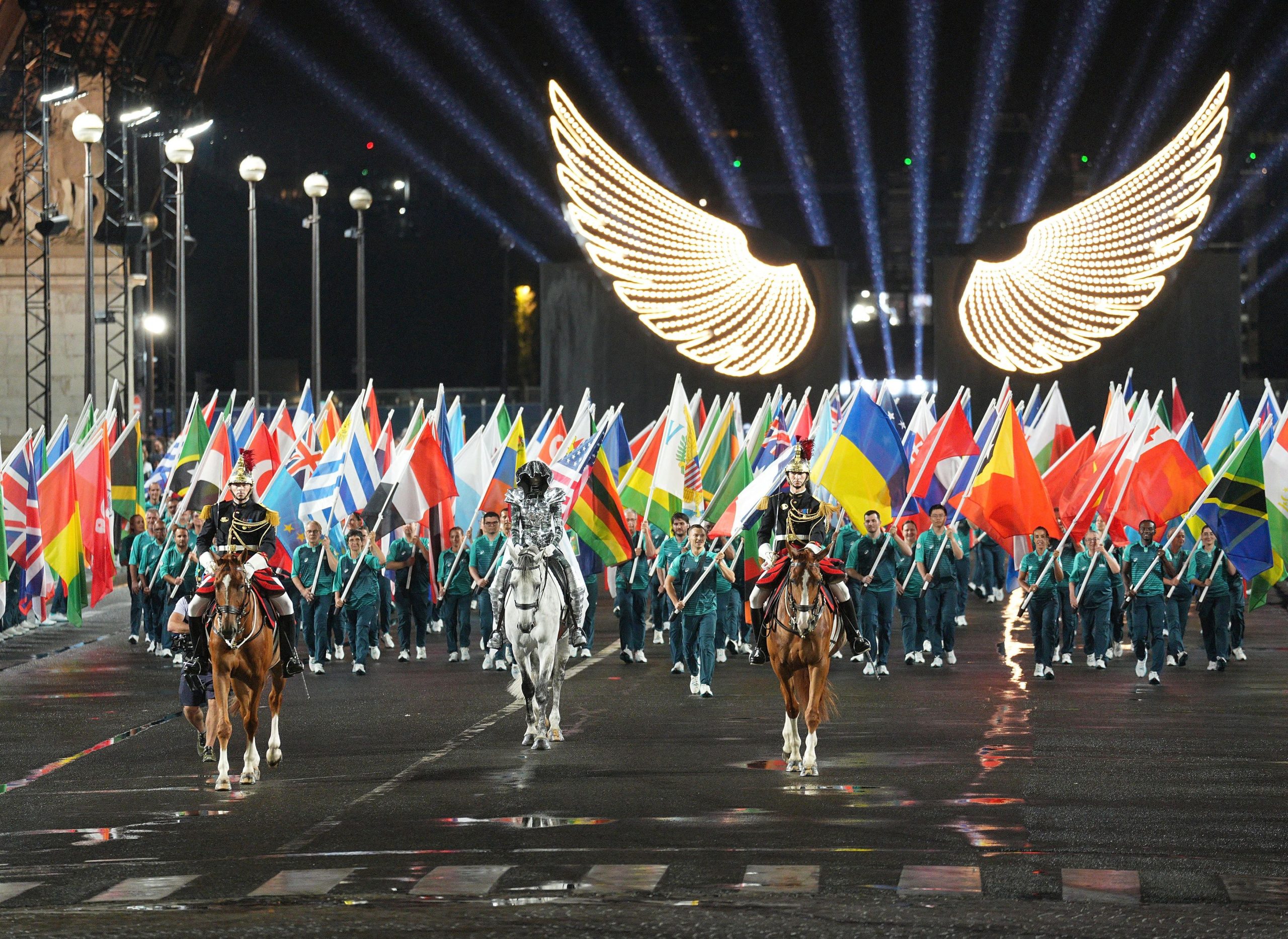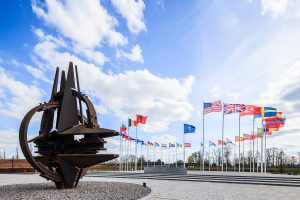PARIS—The Paris Olympics broke with more than a century of Summer Games tradition on Friday night with an unprecedented Opening Ceremony that paraded athletes on boats along the River Seine to kick off the French capital’s $9 billion extravaganza.
Despite driving rain that soaked the 300,000 spectators on the riverbanks, Paris went ahead with a tour de force of overwhelming, unapologetic Frenchness that was years in the making. Cancan dancers high-kicked along the banks of the Seine; Lady Gaga descended a golden staircase in a cabaret scene echoing Josephine Baker; and decapitated Marie-Antoinettes appeared in the windows of riverfront palaces.
The three-hour show, which saw more than 200 delegations on 85 boats wind past a string of stages on the nearly four-mile course, culminated in a laser show and Céline Dion singing Edith Piaf’s “Hymne à l’Amour” from a stage nestled at the center of the Eiffel Tower. French sprinter Marie-José Pérec, who won three Olympic golds in the 1990s, and two-time Olympic judo champion Teddy Riner carried the flame to the cauldron, which will float above the Tuileries Gardens in a hot-air balloon for the duration of the Games.
Looking on from a covered stand of VIPs near the Eiffel Tower, the assembled dignitaries included French President Emmanuel Macron , International Olympic Committee President Thomas Bach , and U.S. first lady Jill Biden.
“Even if in France we can never agree on anything,” Paris 2024 CEO Tony Estanguet said, “we know how to come together when it counts.”
In the end, the ceremony represented a test of Paris and its spirit. The yearslong journey to the lighting of the Olympic cauldron has been a gauntlet of crises for France, from pandemic lockdowns and terror attacks to geopolitical tensions over the wars in Ukraine and Gaza. Hours before the ceremony was due to begin the proceedings received a final gut check when saboteurs burned and severed railway connections in a highly coordinated operation that paralyzed the country’s vital network of high-speed trains.
Mounting a colossal spectacle in the heart of the French capital meant Macron, whose government has been gripped with turmoil for weeks, had to mobilize the biggest peacetime security operation in French history. Pulling it off showed that France, for all of its anxiety over its waning influence on the global stage, remains a cultural superpower, capable of transfixing the eyes of the world with its inimitable panache.
Macron said that even he—a leader with an undeniable flair for the dramatic—was skeptical France could produce a ceremony on such a scale when it was first proposed to him years ago.
“I can tell you that at the very beginning it seemed to be a crazy and not very serious idea,” Macron told reporters at a reception inside the gilded interiors of the Elysee Palace this week.
How the ceremony would unfold had become one of the most closely-guarded secrets in France. The final list of performers wasn’t revealed until the day of the event. And even the person who would light the cauldron wasn’t notified until Friday morning, officials said.
In true Parisian fashion, the city took a classic format, ignored the rules, and added its own stylish twist. Artistic director Thomas Jolly had a $150 million budget to create something memorable for the opening and closing ceremonies of the Olympics and Paralympics. And he used a large chunk of it to attempt something that has never been done in 128 years of Olympic history. The plan to float athletes down the Seine has been central to the city’s vision for the Games since the earliest days of its bid for 2024. It even required a subtle rewriting of Olympic regulations, which had, until now, stipulated that the athletes should march into a stadium.
Instead of the lavish and familiar stadium displays, this show snaked through the entire capital, moving from Notre Dame to the Louvre to the Eiffel Tower. Models strutted down a runway that spanned the Debilly Bridge. Fountains freshly installed along the spine of the Seine spouted columns of water towards the sky as delegations floated by in vaporettos, riverboats and the city’s iconic bateaux mouches .
“This kind of project demands a few huge decisions that become symbols of the whole Olympics,” Estanguet told The Wall Street Journal in an interview before the ceremony. “So I set myself a goal of going where people weren’t expecting us… Our hallmark will be audacity.”
What no one had counted for this waterborne ceremony in the middle of summer was hours of rain on the city’s parade. Paris made no obvious concessions to the weather—dancers in makeup still grinned through the show and BMX cyclists still performed tricks on a floating barge—but athletes clad in un-chic plastic rain ponchos wasn’t the picture postcard image anyone had in mind.
As night fell, the performers leaned into the downpour, dancing and voguing through the raindrops as the barges lit up in a technicolor tribute to afterhours Paris.
“There is a long love story between France and the Games—they were invented just a few kilometers from here,” Estanguet said on Friday. “And when you love the Games, you don’t get intimidated by a few drops of rain.”
Write to Joshua Robinson at Joshua.Robinson@wsj.com and Stacy Meichtry at Stacy.Meichtry@wsj.com



